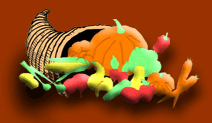CSA farmers sell memberships--sometimes called "shares"--to individuals and families that appreciate fresh, local foods.
Money is paid before the growing season. This enables the grower to purchase seeds, soil
amendments, and other items for growing. It also provides a guaranteed income for the season.
In return, the grower produces a wide variety of fresh vegetables, herbs, fruits, cut flowers, and in some cases meats,
eggs, honey, maple syrup and more.
An important point to remember is that in agriculture, nature can display an unusual sense of humor. The one who
laughs is not always the farmer.
Insect pests, severe weather, and other natural events can cause crops to falter. In the CSA relationship, both
the farmer and the members share in the risk and rewards of each season. After all, both have a vested interest in what happens
on the farm. In this respect, if something goes wrong, the grower does what they can to deal with the issue. On the other
side of the coin, when things go great, everyone prevails with bounty. It's all part of growing food.
Harvest usually begins in late May or early June. At this time the weather is cool and the days are still shorter.
Therefore, available varieties are limited to early greens, onions, baby carrots & beets, and peas--unless the operation
employs a greenhouse system.
But as the days get longer and the weather gets warmer, the number of items in a weekly food box are extensive and generous.
By July, many of the varieties begin to mature--tomatoes, cabbage, broccoli, cauliflower, and more.
In late July and early August, sweet corn is ready for some butter & salt--a great treat for a summer pool party,
a trip to the cottage, or a weekend barbeque.
Each CSA program is unique. But the one common characteristic is that the foods are produced locally. This translates
into a six-fold economic return for the local economy (i.e. for every dollar spent on local foods, six dollars is generated
in the local economy).
Another benefit is a reduction of fuel consumption. Currently, the average meal that we eat travels up to 2,500 km to
reach our dinner tables. Large transport ships, transcontinental trucks & trains, and airliners each use massive amounts
of fossil fuels to move foods across the world.
By sourcing our foods from local producers, we can help protect the environment and reduce oil consumption dramatically.
Whatever your taste, a CSA can offer more than the average store-bought foods. The freshness, quality, and flavor of
local foods can't be beat.
Please support your local growers. They work hard so your families can enjoy the best food in the world.

